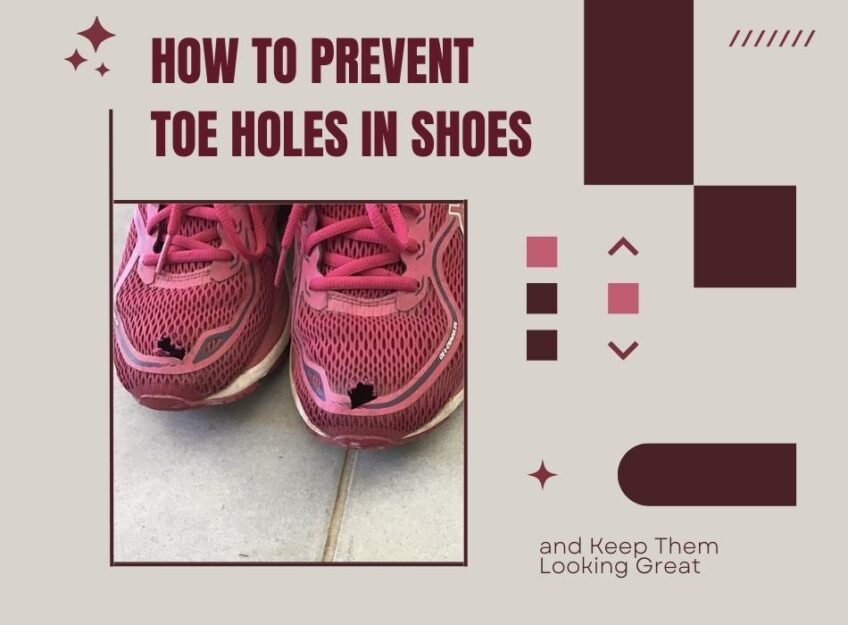Nothing ruins a favorite pair of shoes faster than developing holes in the toes. This is a common problem that affects many people and can be frustrating to deal with. Fortunately, there are some simple steps you can take to prevent toe holes from forming in your shoes. In this guide, we will provide you with tips and tricks to help you prolong the life of your shoes and keep them looking great.
From choosing the right shoes to caring for them properly, we’ll cover everything you need to know to prevent toe holes in your shoes. Whether you’re dealing with canvas sneakers or leather dress shoes, these tips will help you protect your footwear investment and avoid the headache of premature wear and tear.
Identify the Cause
They can be an issue for many people, and the cause isn’t always clear. In this article, we will explore the possible causes of toe holes and what can be done to prevent them.
We’ll look at factors such as fit, materials, and usage, and how they can influence whether or not your shoes develop toe holes. With this information, you’ll be able to understand and address the root cause of toe holes in your shoes and prevent them from happening in the future.
Poor-fitting footwear
One of the leading causes of holes in footwear is poor fitting. Ones that are either too tight or too loose can cause undue wear and tear on the material. Without the proper support, your feet may slide inside the shoe, increasing friction with each step you take and resulting in uncomfortable toes and excessive wear to your footwear.
To avoid this, be sure to purchase shoes that fit properly. When trying on shoes, make sure that there is a thumbnail-width of space between your longest toe and the end of the shoe as well as a finger width of space for each other toe. Additionally, ensure that both sides of your foot are measured by standing during your fitting and that you have adequate arch support through the use of inserts or other orthotics.
Poorly-made shoes
They are a common cause of hole formation in the toe of your footwear. The material used in some shoes is lightweight and lacks the durability to withstand everyday wear, making them vulnerable to tears. Grocery store sneakers with low-grade materials can be especially prone to toe holes.
One way to prevent such holes is to always make sure that the pair of shoes you buy are made of good quality material. Seek out comfortable options with strong stitching and tightly woven fabrics so as to ensure long-term wearability. Additionally, choose leather or rubber soles with thick midsoles for extra support and overall shock absorption – this will help protect your feet from feeling too much strain when walking, which can lead to bigger tears over time.
Prevention Strategies
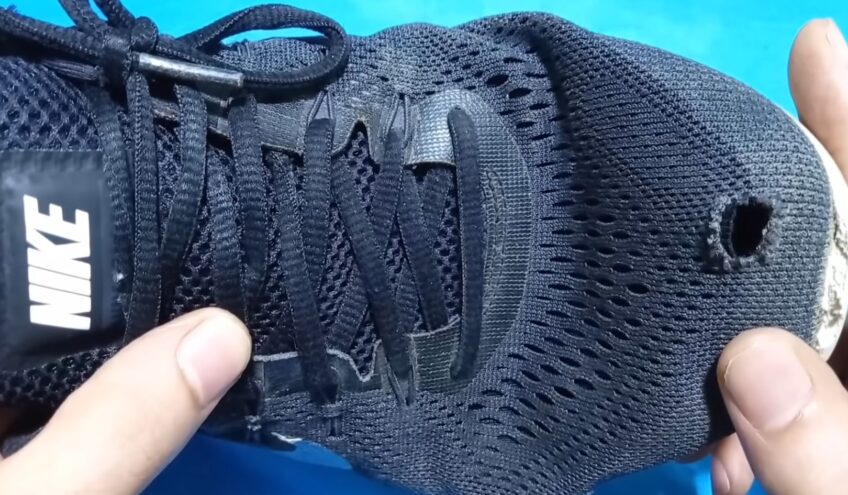
No one likes the embarrassment of having a hole in the toe of their shoes, but sometimes it’s hard to prevent. Fortunately, there are some strategies you can use to help prevent further damage and keep your shoes looking like new.
Let’s take a look at some of the best ways to protect your shoes from developing holes in the toes.
Choose the right size
When you are shopping for footwear, take the time to make sure you have the correct size. Your toes should fit comfortably in the shoe, with a little bit of room to move around but not so much that your feet slide around in the shoe.
Many people pick ones that are too small, thinking they will stretch them out over time, but this can actually cause damage to the shape of your feet by creating them in the long run. If you have just bought a pair of shoes and find that they are a little tight, break them in gradually before attempting to wear them for long periods of time.
Wear thick socks or add an orthotic insert if you need extra cushioning or arch support inside of your shoe.
Avoid synthetic materials
When selecting footwear, it is important to consider the materials used in its construction. Ones made from more natural materials such as cotton, leather, and rubber are usually likely to harbor fewer bacteria and fungi as organisms like these thrive in environments with moisture and synthetic materials (such as plastic and polyester) tend to absorb moisture, making them an ideal breeding ground for germs.
Furthermore, footwear made from synthetic materials such as plastics tends to be less durable than those made from natural or breathable fabrics. Additionally, avoid clothes that are too tight or have seams that rub against the other areas of your feet; this can cause ‘rubbing’ which will not only create holes but may also lead to calluses if not treated in time.
Invest in quality footwear
Investing in quality footwear is one of the most important steps you can take when preventing toe holes in your shoes. Look for ones with quality craftsmanship that are comfortable and supportive to wear. Leather and suede materials tend to last longer than other materials, giving you a better-quality product that lasts longer.
When selecting a new pair of shoes, make sure they have ample enough space in the toe box (the area where your toes fit) to allow your toes some room to breathe without cramping up or pressing against each other. Being aware of fit also helps reduce foot pain and blisters caused by rubbing and scraping against the inside of the shoe.
Additionally, picking up an extra pair of insoles or orthotics can help provide extra cushioning and support which can help protect from developing holes quickly in new shoes.
Care Tips
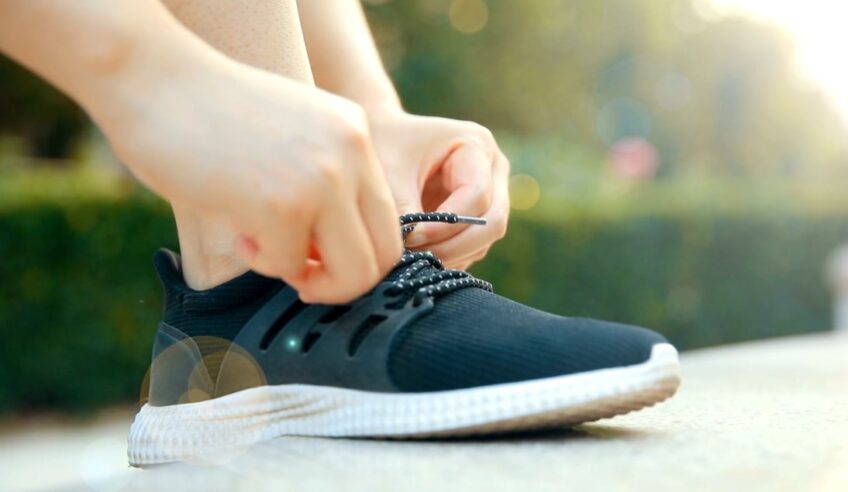
Wearing footwear on a daily basis can cause holes to form in the toes- a common phenomenon called toe holes. Although it’s natural for these holes to form, there are certain steps you can take to help prevent them.
This section will provide tips on how to care for your shoes and avoid the formation of these holes.
Use shoe trees
Using these can help you avoid getting toe holes in your footwear. This is a form-fitting wooden or plastic insert that’s inserted into the shoe when not worn. They help to keep the leather in shape, prevent wrinkles and cracking, and wick away moisture. This is especially important for boots and dress shoes, which tend to be more prone to wrinkling since they are made with thicker leather.
They are available in a variety of sizes and shapes, so it’s best to choose one that fits your shoe like a glove. When you’re not wearing them, store the trees inside them so that the wood maintains its shape and absorbs any moisture from sweat or rain. Be sure to properly clean and condition them regularly; this helps keep the leather in good form and prevents premature wear which could eventually lead to them.
Use a shoe stretcher
This is like a block that is inserted into a tight-fitting shoe and then tensioned with screws or devices until it stretches the shoe’s material. When used correctly, this tool can significantly reduce the amount of toe humping in footwear.
It is important to make sure that the one you purchase is designed for your specific shoe size, style, and leather type. For best results, use more than one stretcher per pair; for instance, if you have narrow feet, use two stretchers for each pair instead of one. Furthermore, ensure that the stretchers are kept clean and free from anything that could damage them or leave creases or discolorations on the leather surfaces after stretched.
Make sure to apply some kind of lubricant when tightening the hex nut — this will help to protect them from damage as well as provide extra grip so that they are secured even further. In addition, ensure that you continue stretching them regularly; it may take several attempts in order to have a tighter-fitting pair of shoes without any holes on their toes!
Repair Strategies
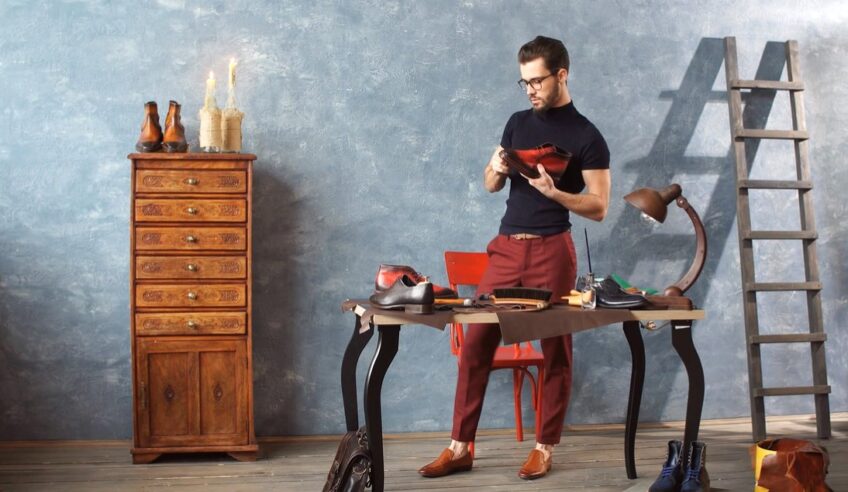
If you’re dealing with toe holes in your footwear, you may be wondering what repair strategies are available. Fortunately, there are several strategies that can be used to prevent, fix, or stop the spread of these holes.
Use a leather patch
One practical intervention to prevent toe holes and elongation of shoe toes is the use of leather patches. Toe patches can be found in many repair shops or online. They are pre-cut pieces of leather, which stick to the inside sole of the shoe below the toe area and provide added protection against pressure points at that location.
When the patch is attached securely beneath the outside sole and around the sides, it acts as an added layer underneath your foot, protecting your sole from creasing when you walk. This simple solution can protect against premature holes and elongation of your shoes’ toes.
Use a shoe repair kit
Regular care is one of the best strategies for preventing your footwear from developing toe holes. Investing in a shoe repair kit can allow you to make minor repairs at home and extend the life of your footwear. They typically include items like leather, patches, glue, and polish. Knowing how to use these items, or having access to a cobbler who can provide professional assistance is particularly important if they have become worn but fixing them is still possible.
If you have leather uppers on your shoe, including on your ankle portion, it’s important to regularly use a leather conditioner made specifically for that purpose. This will provide extra protection and moisture while also helping to protect from cracking in those areas.
Additionally, you may want to invest in a quality pair of insoles with arch support which offer additional cushioning for the ball of your foot where most cleats cause pressure. The extra cushioning can help minimize any discomfort and prevent toe holes from forming in the upper material due to pressure points during normal wear and tear.
Use a shoe goo
This is an adhesive material designed for repairs on any type of shoe. It’s most commonly used to prevent these holes from forming, as well as to repair minor rips and damages. The good acts like a flexible fabric patch, providing a cushioning layer that won’t crack or tear like traditional sole patches or foam forms. It also provides protection against water, oil, and abrasions, reducing the chances of your footwear sustaining further damage.
All you need to do is apply a layer of the shoe goo directly over the hole or rip you’re trying to fix; its strong adhesive can seal up small punctures in no time. You should also apply an additional layer on top of the first one to create a thicker protective base and ensure maximum stability. After applying it over the damaged area, let it dry completely before wearing them (usually overnight).
This is easy to use and is considered one of the most cost-effective repair strategies available today. By using this product regularly, you can extend the life of your footwear for many years and prevent costly replacements in the future!
When to Replace Shoes
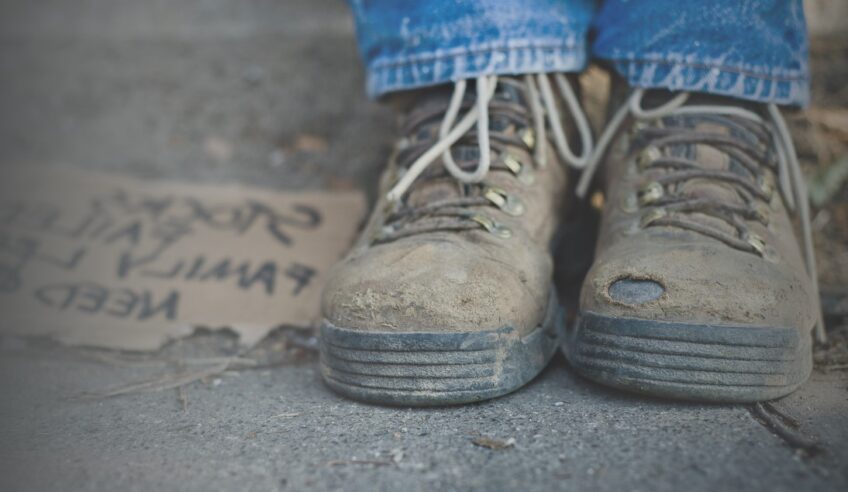
In order to prevent toe holes in your footwear, it is important to know when it is time to replace them. Wearing worn-out shoes for too long can cause them to stretch out at the toes, leading to holes and ultimately, ruining them.
Consider the cost of repair
In many cases, it can be more cost-effective to repair or refurbish a pair of shoes than to purchase a completely new pair. Before you commit to spending money on a new pair, weigh the cost of repair services against the price of a replacement. It’s important to remember that, unlike clothes shopping, these purchases usually carry a higher initial investment; thus, it can make sense to factor in the potential monetary savings provided by repairing your existing footwear.
For example, if there is only minor damage, such as one toe hole in the toe area or worn-out heel areas then this may be able to be patched up and repaired by an experienced shoe repair operator. Paying for a one-off patch job will save money in the long run than simply buying an entirely new pair without doing additional research.
Don’t just assume that because you have damages to your footwear they must be thrown out immediately – do some research and consider taking them for repairs! A good leather store or a repair shop may provide advice on whether it is economical for you to repair your shoes or whether it’s better for you to purchase something new instead.
Consider the age of the shoe
To determine when you should replace a pair of shoes, you should consider not only the amount of wear and tear they have experienced but also their age. Generally speaking, a shoe should be replaced every six to twelve months. This is due to a natural deterioration in the material that can’t be prevented regardless of how well it has been taken care of.
Properly caring for them can make them last longer, but at some point, the materials will start to break down even if they are not worn out from normal use. As an example, the foam in insoles generally breaks down faster than other components in them and is often replaced more frequently even if there is no visible wear on other parts of them.
If they are four or more years old, it’s more likely that they need to be replaced regardless of how carefully they were cared for. Natural deterioration can lead to unexpected holes forming near your toes if you don’t check frequently and replace your footwear when necessary.
Consider the quality of the shoe
When selecting footwear, consider quality and comfort. Here are key signs that it’s time to purchase new shoes:
-Uneven wear on the bottom of the shoe – If the sole has worn off unevenly, or very quickly, it’s time to replace them.
-Damage from extreme weather – If a pair of sturdy hiking boots have become cracked and misshapen from regular exposure to sun or rain, it’s time for a new pair.
-Interior has stretched out – Internal fabric stretches over time, meaning you can wind up with an overly large fit if you don’t switch them out regularly. Make sure that any new replacements fit properly and get those insole measurements done if necessary!
-High break-in period – If a new pair of boots need multiple wears to finally be comfortable — no matter how expensive — they’re not worth your money. Boots that don’t become comfortable after a short break in period usually means they are cheaply made and won’t last long either.
-Extremely tight or uncomfortable fit – They should never feel too tight right away or make your feet hurt when walking; this is a sign that they need replacing immediately!
FAQs
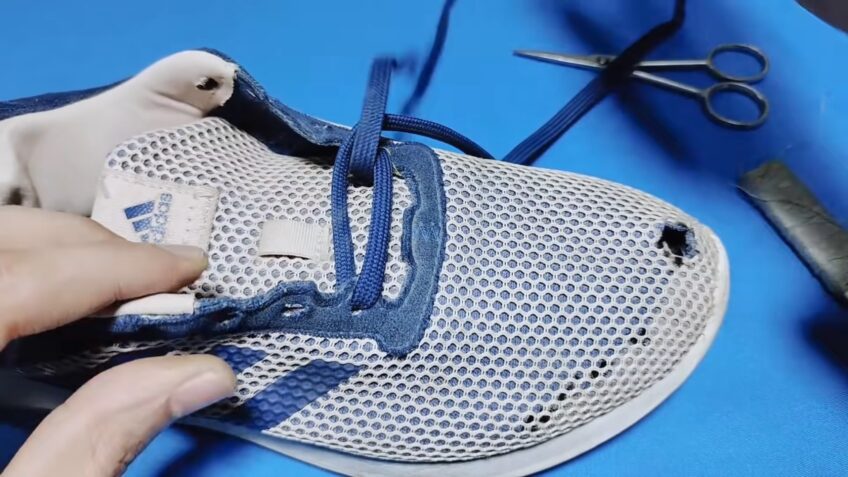
How do I choose the right shoes to prevent toe holes?
To choose ones that are less likely to develop toe holes, look for ones with reinforced toe caps or shoes that are made of durable materials.
How can I care for my shoes to prevent toe holes?
To care for them and prevent toe holes, store them properly, keep them clean, and apply protective sprays or creams.
Can toe holes be repaired?
In some cases, these holes can be repaired by a shoemaker or cobbler.
How often should I replace my shoes to prevent toe holes?
The frequency of replacement depends on how often you wear them and how well you care for them. Generally, they should be replaced when they show signs of significant wear and tear.
What types of shoes are most prone to developing toe holes?
Ones that are made of soft materials or are not reinforced in the toe area are more prone to developing toe holes.
Can I prevent toe holes in sandals or flip-flops?
To prevent them in sandals or flip-flops, look for styles that have reinforced toe caps or are made of durable materials.
How do I know if I need to replace my shoes?
You should replace them when they show signs of significant wear and tear, such as holes, worn-out soles, or an uncomfortable fit.
How much should I spend on shoes to prevent toe holes?
The price does not necessarily determine their durability or ability to prevent toe holes. Look for ones that are well-made and constructed of durable materials.
Can I prevent toe holes in high heels?
To prevent toe holes in high heels, look for styles with reinforced toe caps or choose a lower heel height to reduce pressure on the toe area.
What are some DIY methods for preventing toe holes in shoes?
Some DIY methods for preventing toe holes in shoes include using duct tape to reinforce the toe area or applying a layer of clear nail polish to the toe area for added protection.
Conclusion
To prevent toe holes in your shoes, it is important to take steps to reduce pressure and friction on the toe area, choose ones made of durable materials, and care for your shoes properly. By wearing toe caps or shoe inserts and taking the time to properly store and clean your shoes, you can extend the life of your footwear and avoid the frustration of having to replace shoes prematurely.
Remember, it is also important to replace your shoes when they show signs of significant wear and tear, as this will help prevent toe holes from forming. By following these simple tips and tricks, you can protect your shoe investment and keep your favorite pairs looking great for years to come.

